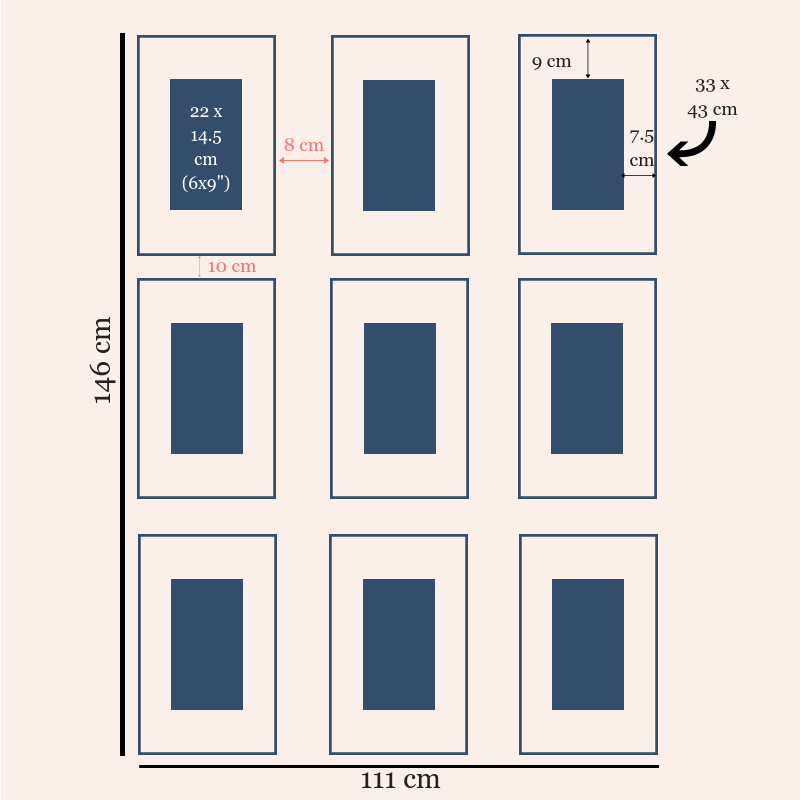

Hanging isn’t the only way to display your artworks. These can also be deployed in a cluster as a gallery wall.
VERTICAL GALLERY WALL LAYOUT WINDOWS
Smaller areas, like those between windows and doors, are the perfect places to display your more petite pieces. Another good option is to create a grouping of pieces, and a spacious wall allows you to spread them out. Small pieces on an expansive surface can look lost and isolated, so don’t be afraid to go big with one sizable work. Should you go for the obvious large wall or smaller spaces? Choose Your Wallįirst, decide where you want to hang your artworks. With these pointers, you can deploy your art to have the greatest impact in your space, personalizing it in the most beautiful way.
VERTICAL GALLERY WALL LAYOUT HOW TO
Below, we show you, step by step, how to arrange wall art in different ways to maximize your wall space, including specific tips for designing a gallery wall. However, arranging artworks on a blank wall can be daunting. It allows you to evoke emotions in a room while also showing off your tastes and interests. Photo by Steve FreihonĬreating a wall of art is a wonderful way to enhance your space, showcase beautiful pieces and tie an interior design together. the CSS.This downtown Manhattan loft designed by Shawn Henderson features a colorful grid layout of prints by artist Robert Indiana. Now comes the most fun and important part, i.e. I’ve used some sample data too in the demo page for a practically-better demonstration. masonry division acts as the masonry container and each. Lorem ipsum dolor sit amet, consectetur adipisicing elit.Īs you can see above, the. It’s nothing but a box with a bunch of objects or items thrown inside. What about spacing between the grid items? The column-gap property solved the gutter problem. The child elements inside the block get aligned as per the specified number of columns.Īnd this gives an effect of a masonry layout, without any involvement of JavaScript. The column-count propertyĬSS column-count allows you to add a specific number of adjacent columns to any block element. If you are okay with HTML and CSS, this tutorial is going to be easy for you. Note: Gutter is the space between the masonry items. Multi-column properties column and column-count collectively lay down the foundation of our masonry.Īfter that, we will also be adding gutter to our masonry with column-gap, its another property. This module allows us to present blocks as part of virtual columns.

I also contributed the outcome of this experiment to a WordPress plugin later on, which was a hit back then.īreaking cover, I’m talking about the CSS multi-column layout module. Before going further, I would like to show you with a demo of what we are going to create:Ībout the secret, I discovered this technique while experimenting with CSS column properties. Not a secret actually, some people have already written about it.

Later on, I got success with it using some rarely-used CSS properties. All I got was equal-height columns, which is definitely not a masonry. Not exactly tables, but the table display properties. This is what a masonry pattern looks like I started off by using CSS floats, then tried inline-blocks, ended up in a messed up layout with tables. How about doing pure CSS masonry layouts?īefore moving any further, I have some updates for you about my experiments with CSS masonry:Īfter the launch of Pinterest in 2011, I myself tried creating its lookalike with plain CSS. We already have some solid JavaScript alternatives out there to create masonry layouts. Pinterest has inspired many to do masonry-based layouts on their sites.

Published on Maby Rahul Simple yet beautiful pure CSS Masonry layouts Creating a Responsive Pure CSS Masonry Layout


 0 kommentar(er)
0 kommentar(er)
